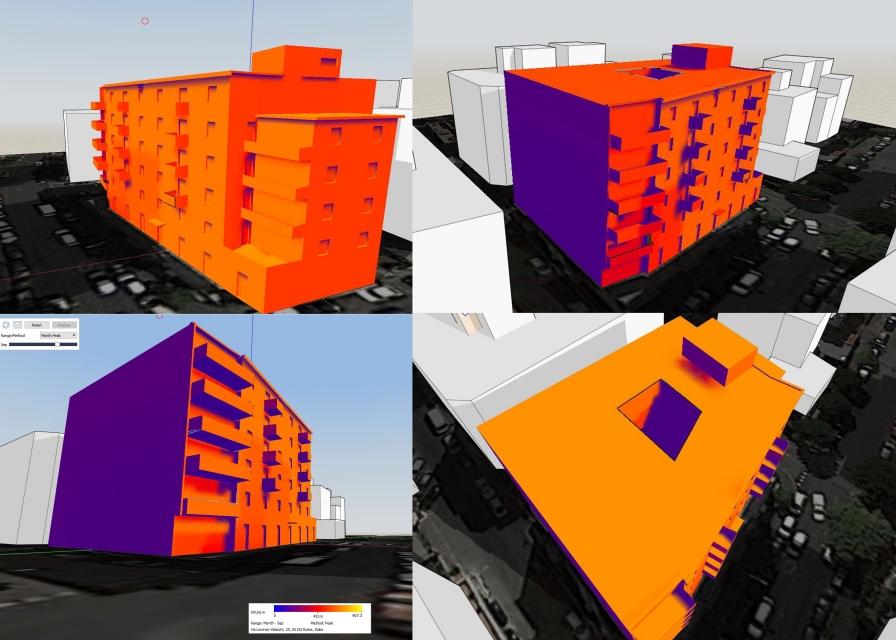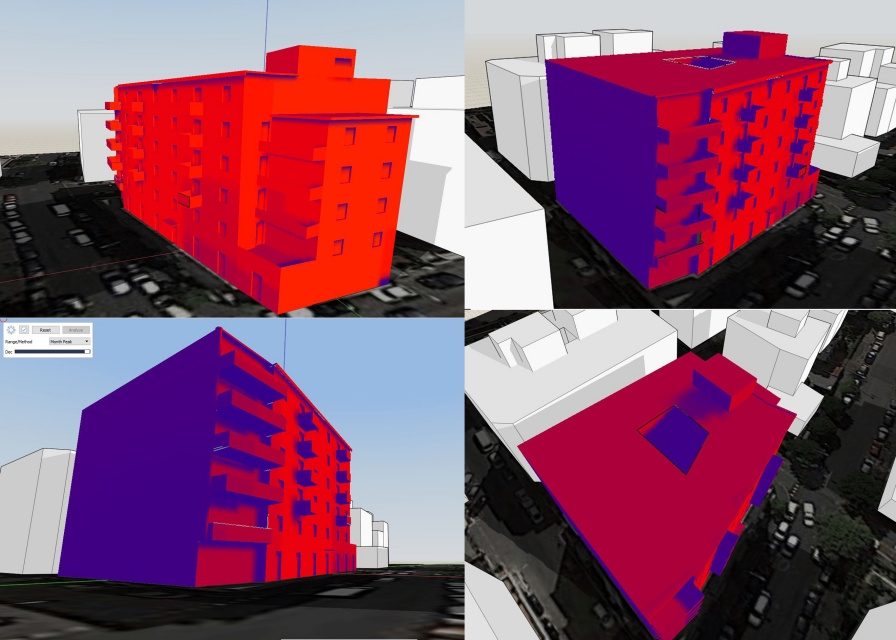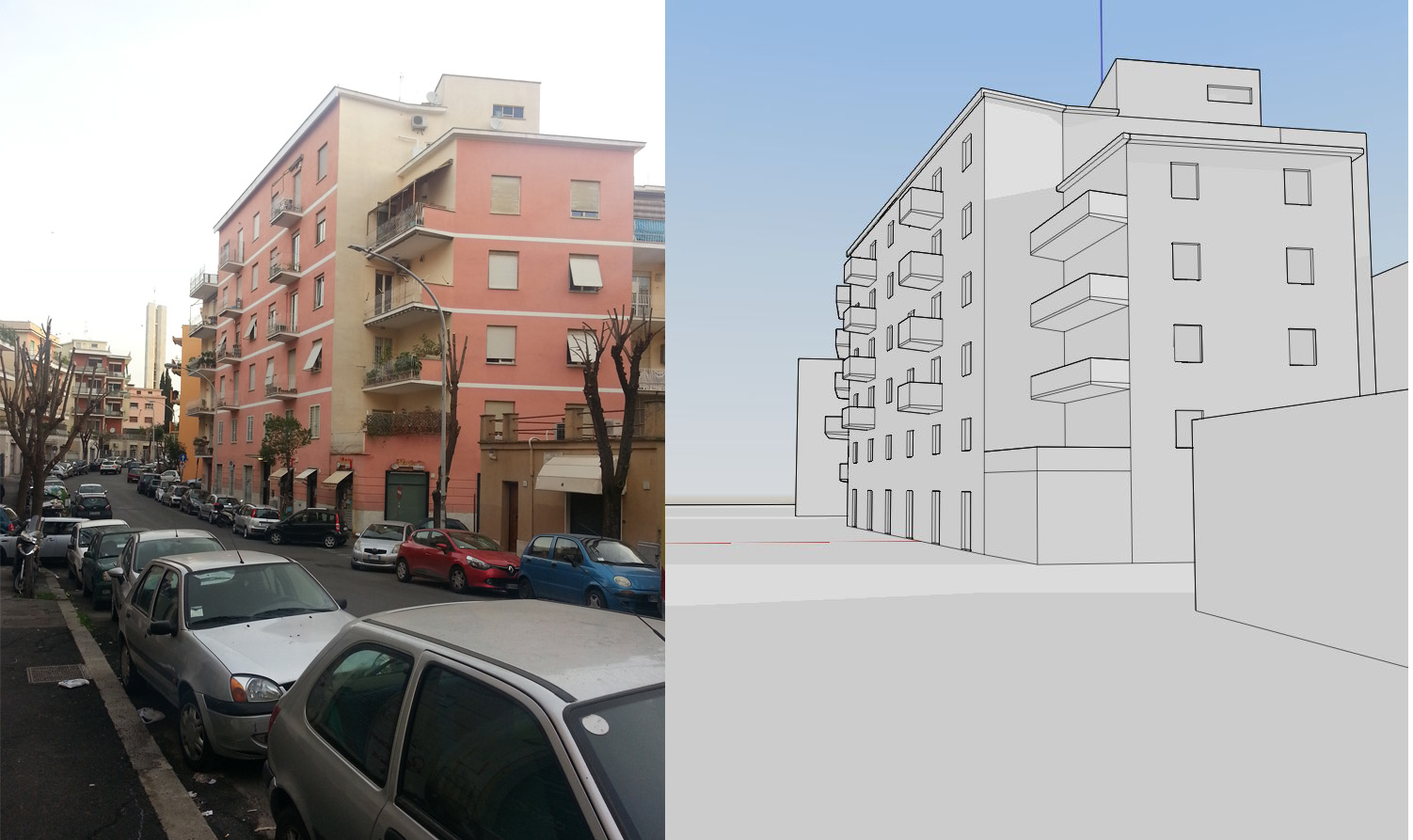LAB6_MONTEVERDE_SOLAR ANALYSIS
Here we are back in Monteverde with our building, we are going to test it using the Formit Solar analysis.
First of all we need to create a group in order to apply every setting to the whole unit. To do this we select all the sufaces of the building and we right click on the mouse to show a menu which contains the "Create group" command.
Once we created a group, the program shows a sort of cage that recognizes the selected volume: now every edit will have effect to the whole building.
We set the solar analysis in equinoxs of spring (in Mars), autumn (in September) and solstices of summer (in June) and winter (in December).
Four views for each period are going to show the whole status.

The test shown up is related to the equinox of spring, in Mars. The result shows a constant double side, with a medium impact of the sunrays on the South-East side and a minimum level of sunrays on the West side. The cavaedium is so deep to let the ligh to penetrate, so it will receive for almost 90% of it's surfaces indirect light.
The second test shown up is related to the solstice of summer, in June. We realize a huge level of solar energy on the roof and generally on all the horizontal surfaces. The cavaedium and the West side are once again affected by a low level of solar energy, they are going to receive indirect light almost all the day. By the way it's evident a slightly better situation for the violet/blue surfaces shown in the first test: now we are going through a hotter color temperature.

The third test shown up is related to the equinox of autumn, in September. We obtain a similar result as the first test ( equinox of spring): it's evident the huge difference between what's under the direct sunrays and what's not. The West side as the cavaedium itself, appear as the most dangerous sides of the building; even the lower part of each balconis (especially where the mechanical momentum is at its peak) need to be under control, for regular maintenance.

The fourth test shown up is related to the solstice of winter, in December. Levels of solar energy are low on all the building, and extremely low on the sufaces on the West side, already known as the ones on the wrost possible position of the volume.
The violet result is close to the deep blue which certifies a dangerous cold surface. We are going to have a reasoning below to resume all the tests shown up.
After all the analysis we can confirm that the problem of blue/violet surfaces (cavaedium included) have to be controled every year to prevent a over limit level of humidity. This issue is probably bigger than the test shows because the building had been built in 1960 and in that times there were no attenction toward the common problems of today, as the "thermic bridge" and other issues due to the insulation.
All the structural nodes have to be protected more than the builders established when they built their project. We mean to consider especially the edges around the windows, the lower part of the balconis, the areas of connection between floors and walls.



